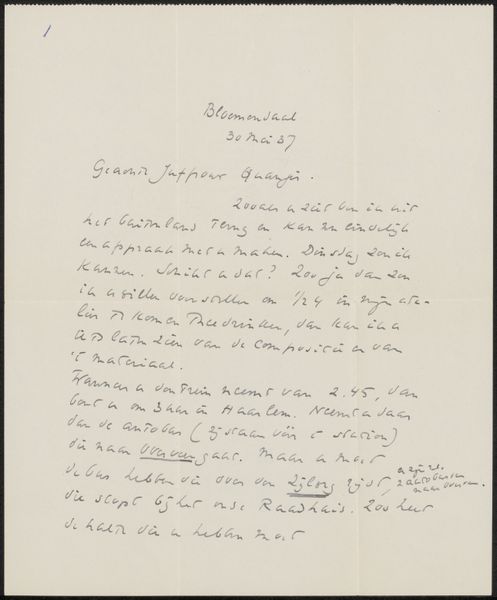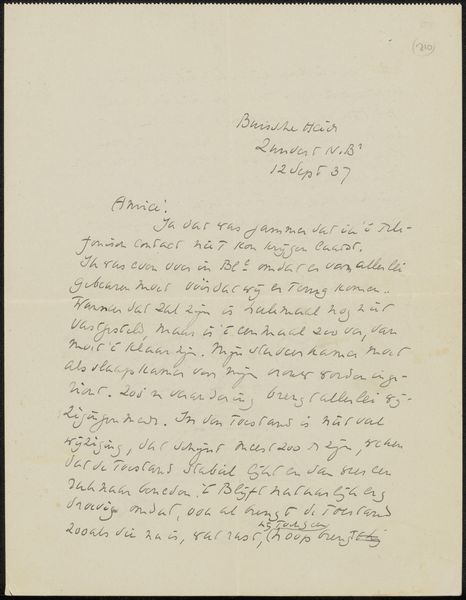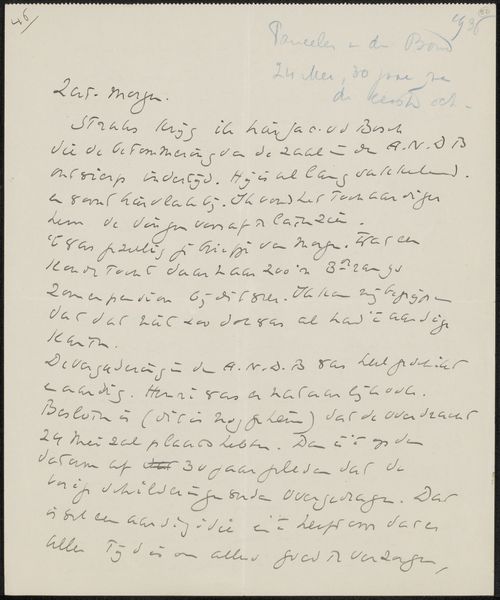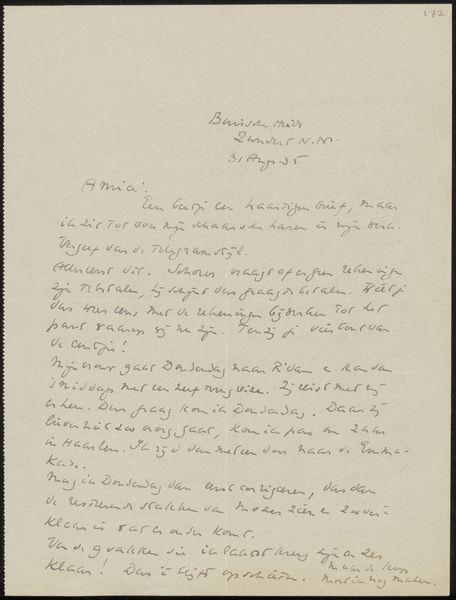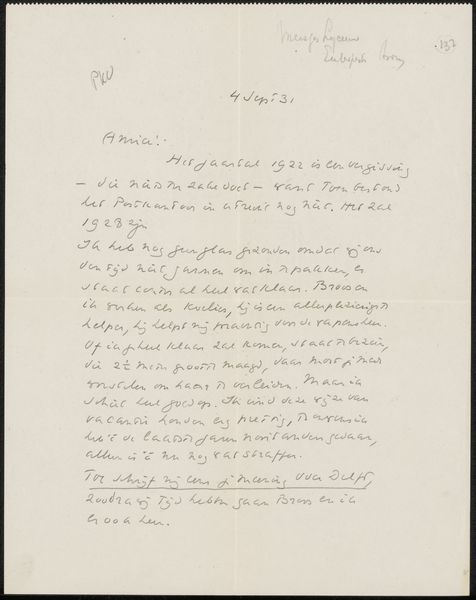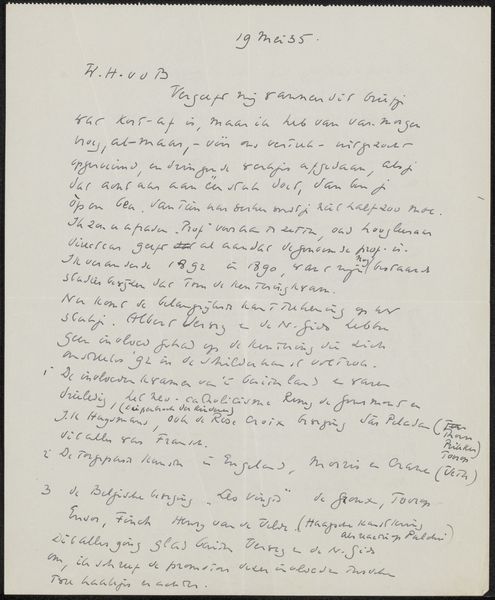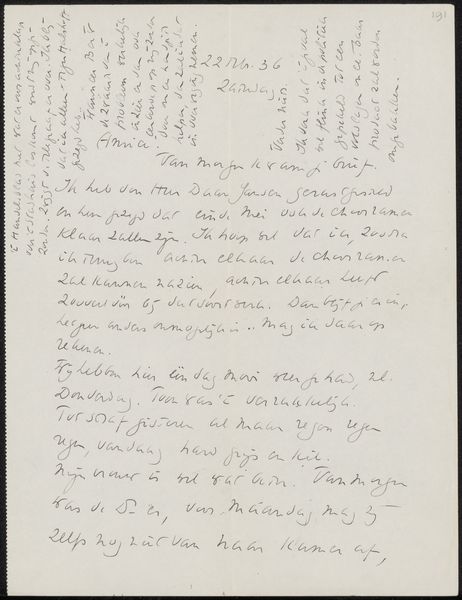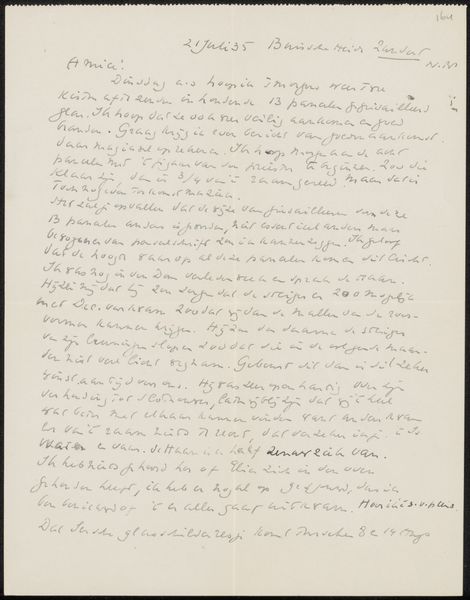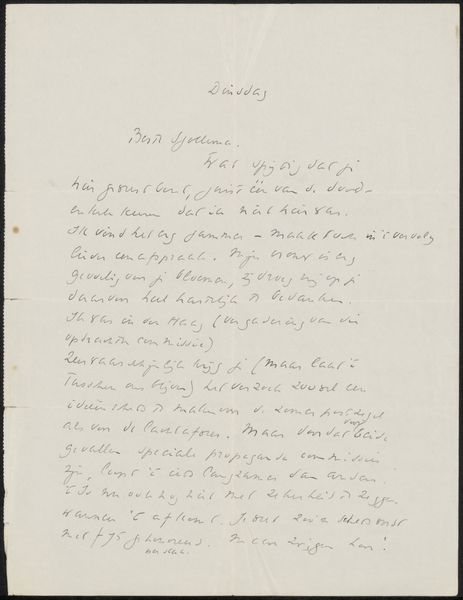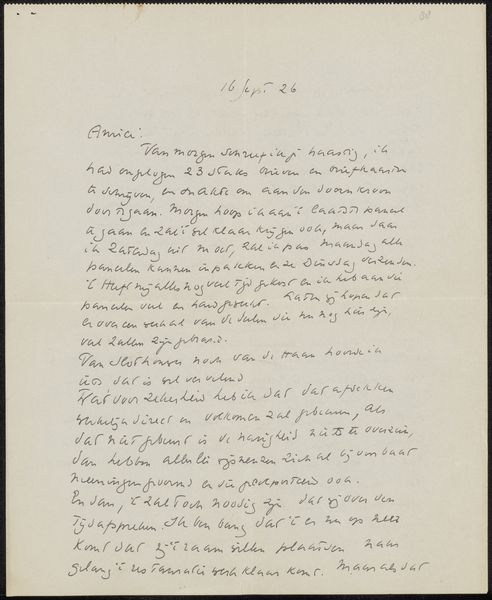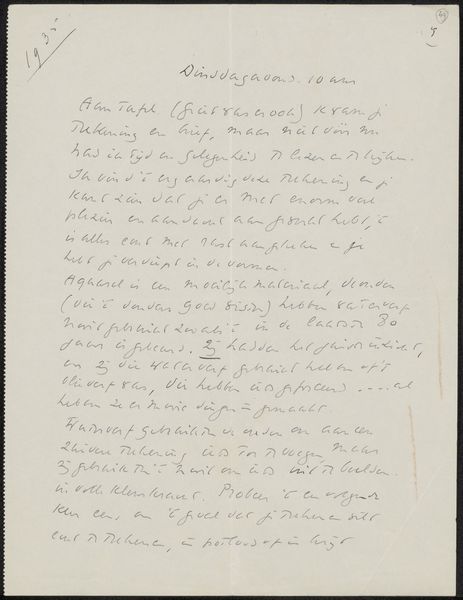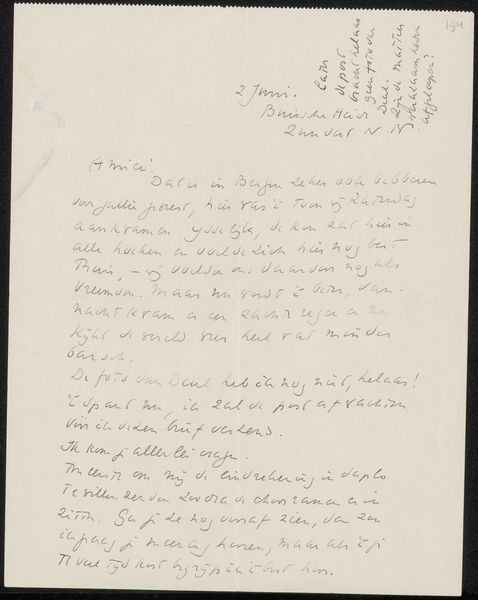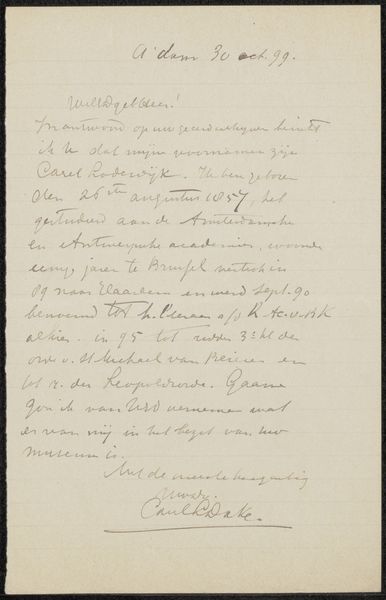
drawing, paper, ink, pen
#
portrait
#
drawing
#
ink paper printed
#
paper
#
ink
#
pen
Copyright: Rijks Museum: Open Domain
Curator: This work, "Brief aan Marisa Quanjer" by Richard Nicolaüs Roland Holst, likely from 1937, is an intriguing document. It's simply ink on paper, but it holds layers of potential meaning. What strikes you about it? Editor: It definitely has a personal feel, given that it's a handwritten letter. It's interesting that a museum chose to preserve it. I’m not sure what to make of it as "art," though. What do you see in this piece? Curator: I see the fascinating intersection of personal correspondence and artistic expression. The act of writing, particularly a letter, has long been associated with intimacy and intent. Roland Holst, though not primarily known for letter-writing, imbued his life with the principles of symbolism and a deliberate construction of meaning. Editor: So, the letter itself becomes a kind of symbolic artifact? Curator: Precisely. Consider the visual weight of the handwriting, the composition of the text on the page. It speaks to an emotional state, a relationship between the artist and the recipient, Marisa Quanjer. Look at the care put in handwriting. What can the cultural context around letter-writing during the 1930s tell us? How was personal communication viewed and valued then? Editor: That makes me think about how people today have email or social media posts cataloged, and we’re much less concerned with beautiful script or composition. Perhaps, like the letter as a form, that attention to beauty feels precious in comparison. Curator: A wonderful point. Perhaps the preservation of this letter serves as a symbolic preservation of that mode of communication. Each carefully written letter shows the past in our cultural memory. Editor: I guess looking at art as carrying symbolic importance gives an added value to something as simple as a letter.
Comments
No comments
Be the first to comment and join the conversation on the ultimate creative platform.
